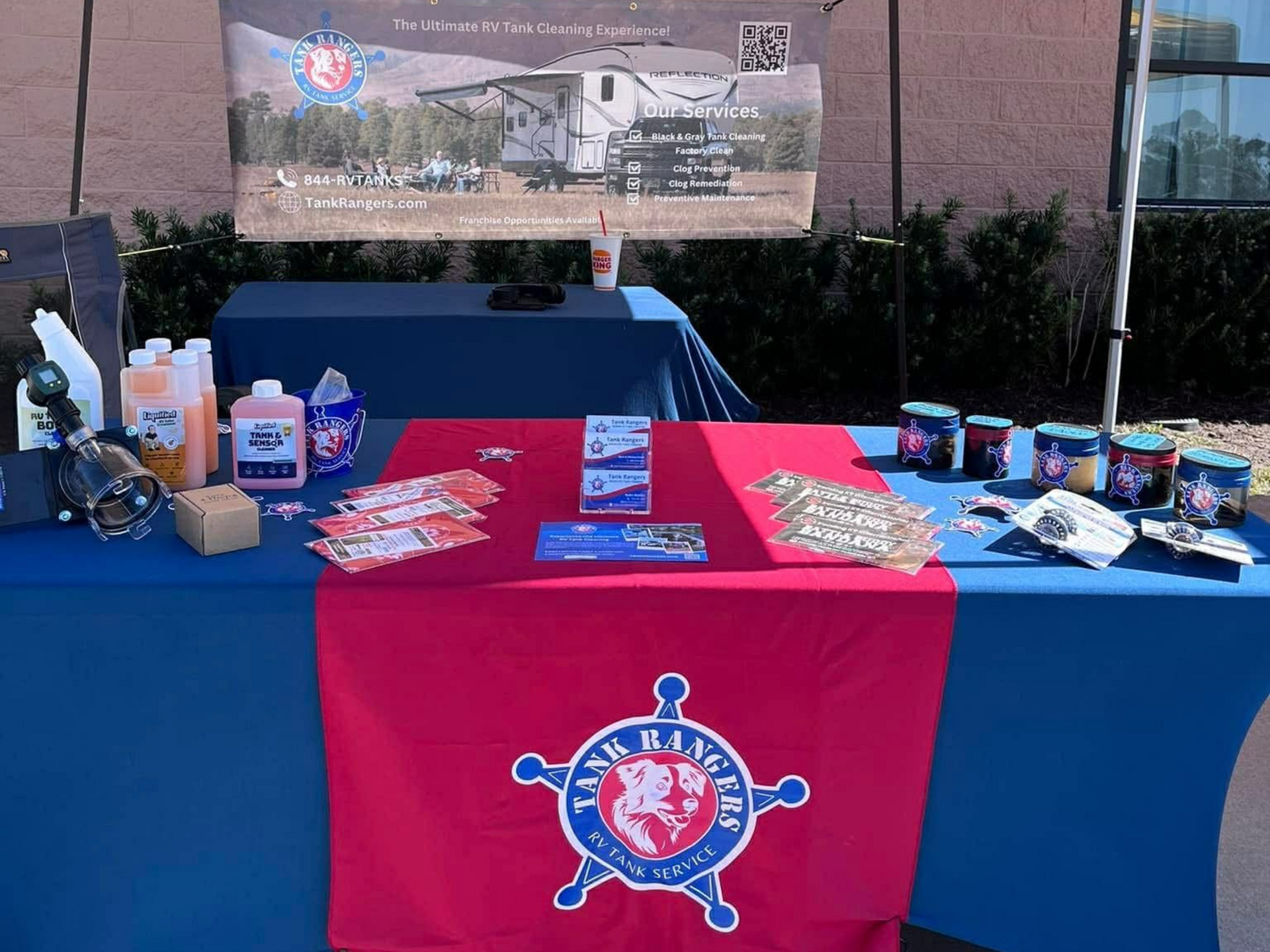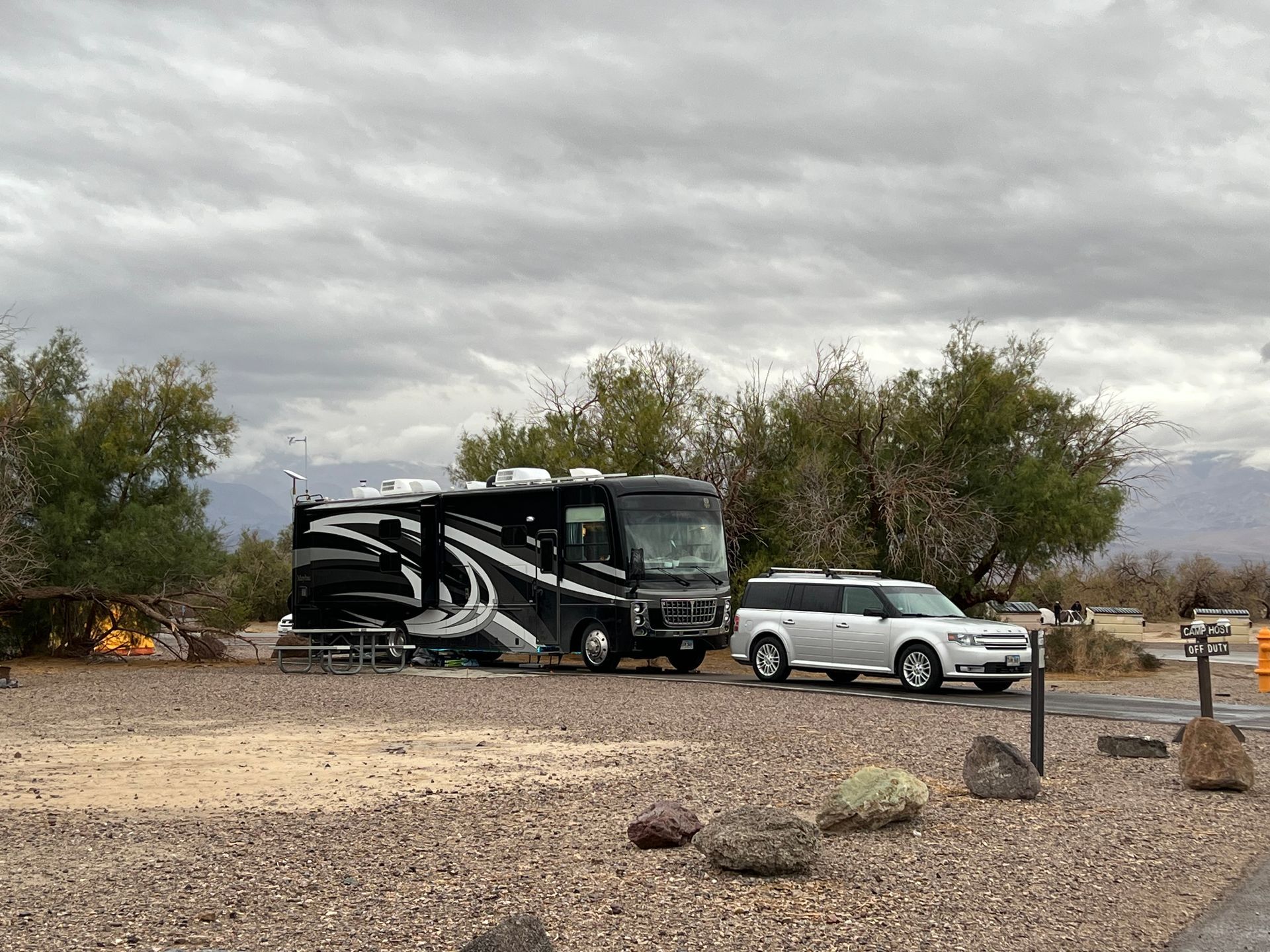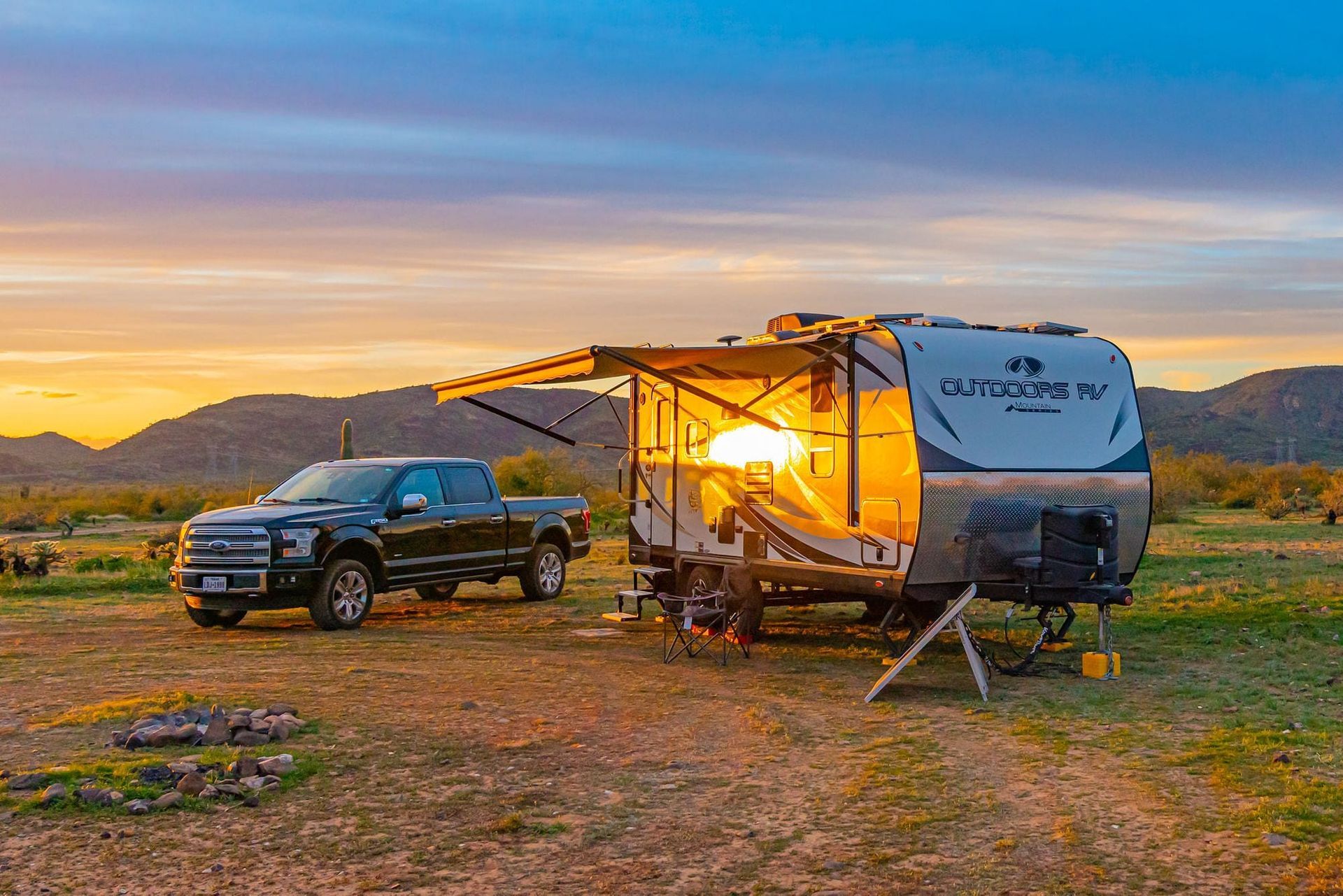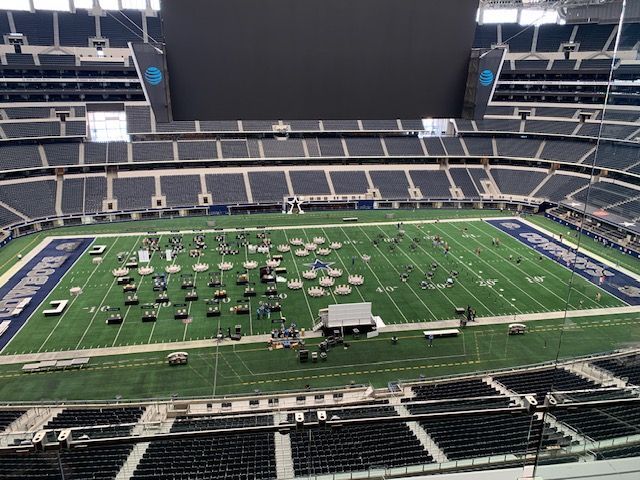Inverters – When You Don’t Have Shore or Generator Power
Doug S • April 24, 2025
It’s common for new RVers to to be confused as to whether or not they will have “power” when they aren’t plugged in at a campsite. This confusion comes from the fact that there are 2 power systems in RVs:
- 12v system runs off of the batteries ; 12v powers things like lights, water pump, bathroom vents, furnace control, slides, and electric stabilizers/leveling system
- 120v system comes from the campsite power (or generator or inverters); 120v items are your regular outlets, microwave, air conditioners, residential refrigerators, most TVs, etc.
I’d like to extend a huge thank you to Kevin Skelton for his technical review of this article. I am good up until the details for complex setups. Check out their Never Stop Adventuring YouTube channel for great information.
Running 120v Off of Batteries
So what do you do when you want to be unplugged but still run various household appliances? You need to make 120v power!
Your options for making 120v power are to either fire up a generator or use an inverter to make the power from the batteries. The benefit of using an inverter over a generator is that inverters are silent and don’t use any fuel.
Battery Considerations
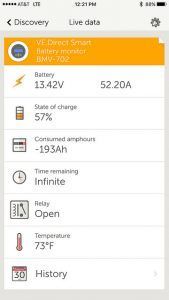
Before we talk about inverter installation, you need to be mindful of what power is used from the battery/batteries. Batteries only store so much power. Depending on your types of batteries, you can use up to 50% of the rated charge for lead acid batteries and up to 100% with lithium batteries.
When you start using your batteries more and more, I strongly suggest you get a proper monitor like the Victron BMV to protect your batteries from too deep of a discharge as that can damage them.
Do Some Homework
Doing a little homework ahead of time is also a great plan. Technomadia has a good write up on doing an “energy audit“. Basically, use a Kill A Watt meter to measure the amount of power used by various devices. Doing this will help you determine what size inverter you need and how many batteries you need to get by.
Inverter Installation
Installing an inverter can be very simple to very complex. It basically comes down to what all do you want to power and how much convenience do you want ?
Simplest Installation – Plug Inverter into 12v Outlet
The first option is to get a small inverter (150 watts or less) and plug it into an existing round 12v outlet. This is a good option for powering a basic low-power appliance like a TV.
This does require that you have a round 12v plug already installed in the camper. Strangely, these are becoming fewer and further between these days. Both of my big 40’+ campers have only had 1.
To use it, you plug the inverter in and then the TV into the inverter.
Connect Inverter to Battery and Run Extension Cables
When installing an inverter, the size of the cables between the inverter and batteries are sized based on how big of an inverter you’re using (identified in watts) and the distance from the battery to the inverter. The higher the watts and/or longer the distance, the bigger the wires. You’ll often find that the wires to the round 12v plugs are very small and only support a small inverter.
To overcome that, you can install the inverter close to the battery and then run an extension cord to what you want to power. As we started Wallydocking, we found that I needed to run my CPAP/BiPAP machine , power our Sleep Number bed, and charge a variety of devices (phones, tablets, etc.). With all of these things, we would attach an inverter close to the batteries and then ran an extension cord into the window and then others to the various things we needed power. It felt a bit yucky with cords on the floor, but it did the job.
Connect Inverter to Battery and Plug the Camper Into it
The mess of cords was a hassle and as we got prepared for 2 weeks of boondocking at the Albuquerque Balloon Fiesta, I knew that it was going to drive us crazy. For that, I got the hairbrained idea to plug the whole camper into the inverter using a 50amp to 15amp adapter. I then ran my heavy duty extension cord to the inverter.
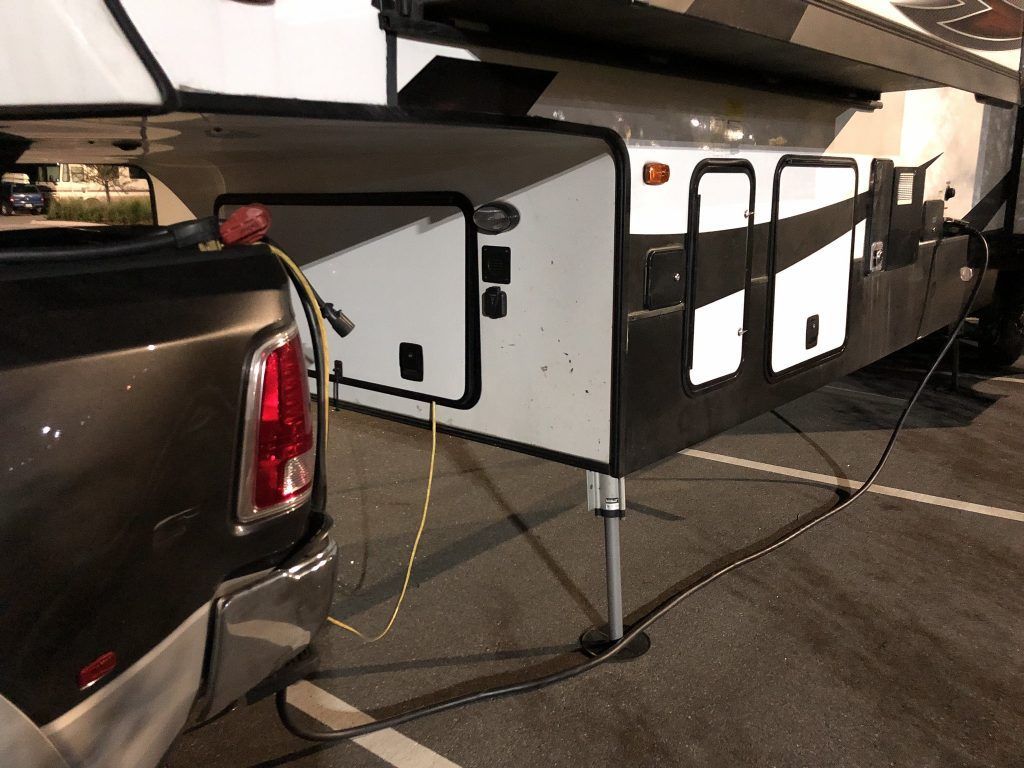
This works great, but you have to be careful and there are a few caveats to watch out for:
- You must turn OFF your battery charger (using the circuit breaker in the panel). If you’re lucky, it overloads the inverter and trips it; if you’re unlucky, it turns into a death spiral of the inverter/charger chewing up the batteries.
- It’s best to turn off all breakers except the ones for outlets that you plan on powering.
- You have to be very careful with how much power you use- either from the perspective of drawing down the batteries too quickly or overloading the inverter and tripping it.
- Set your fridge to propane mode if you can
- Water heater goes to propane mode
- As mentioned, your air conditioner breaker should be off (it won’t work anyway)
- Electric space heaters shouldn’t be used; use the gas furnace instead
- Microwave and coffee makers need special consideration (larger inverter and plan on it using quite a bit of battery power)
This worked quite well for us, but it was a hassle during those 2-weeks at the Balloon Fiesta because switching between generator and inverter meant I had to go outside, switch the cords around, and turn circuit breakers on/off.
Transfer Switch for Specific Circuit Breakers
When the next Balloon Fiesta rolled around, we were in a different rig. This time, we had a built-in generator and I knew I didn’t want to muck with dealing with the power cord and turning breakers on/off.
This time I identified which circuit breakers that I wanted to be powered by the inverter. For me, there were 2: “GEN” (aka general) and “GFI” that powered almost all of the outlets in the RV.
I had already installed the inverter in the battery compartment and connected it to the batteries. I connected an extension cord to it and ran the cord through the underbelly of the RV to where my circuit breakers are.
I had a friend babysitting me and helping me, so we cut the “load” wires coming off of each circuit breaker to the outlets. We inserted a 15amp Xantrex Auto Transfer Switch by connecting the circuit breaker side of the wire to the “AC Input 1” on the switch and then the load side to the “AC Output” on the switch. You then connect the extension cord that runs from the inverter to the plug for “AC Input 2”. You’ll need one for each of the circuit breakers that you want to power.
The end result is that as if shore power is lost, the inverter automatically takes over powering that circuit breaker. There’s no thinking, no moving cords, it just works. Unfortunately, it’s not quite fast enough to keep the video game system and TV on… my son found that one out the hard way!
Automatic Transfer Switch for a Set of Breakers
The last option is the most complex option and that’s using an inverter with a built-in transfer switch. The benefit here is that it isn’t an extra piece of hardware that you have to install for each circuit breaker. This is generally used for larger 2000, 3000, or even 5000 watt inverters. Also, these inverters are usually battery chargers that are bigger and faster than the built-in battery charger (aka converter) that comes with your RV.
My favorite is the Victron Multiplus series of inverters. Fair warning, they’re expensive but Victron has been around for years in the marine business. They’re quality and they’re durable.
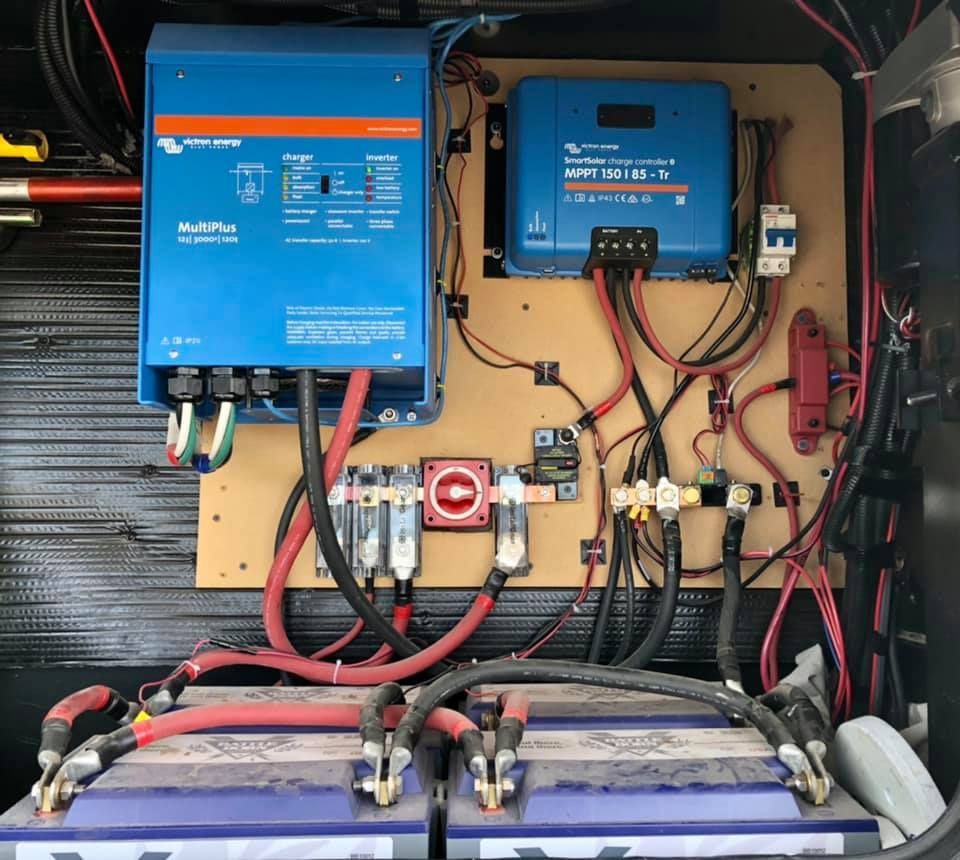
For 30amp rigs, it’s easier than 50amp rigs: you move the shore power input to feed directly to the inverter and then the inverter output goes to the circuit breaker panel.
For 50amp rigs, it’s a little more tricky due to 50amp service being 2 legs of 120v service that feed your RV and the inverters only automatically switch and output a single 120v phase. This means that you need to decide which outlets you’re going to invert and then move those breakers to a subpanel. You wire in the input for the inverter from the main panel and the output of the inverter to the subpanel.
And the installs just get more and more crazy advanced from here! I have friends who have a dozen lithium batteries, a pair of inverters, and 220v appliances that the inverters will upscale 30amp/120v service to provide power to everything. Don’t worry, some of that didn’t make full sense to me either!
So, if you want/need power when not plugged into shore power, there are options. From something as simple as plugging into an inverter, to upgrading all the things!
Other blogs you might like...

